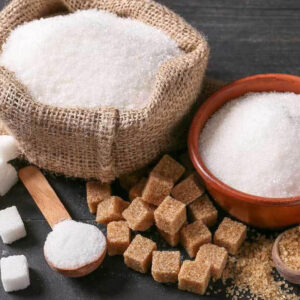In discussions of beet sugar vs cane sugar, the origin of the sugar plays a crucial role in its composition.
Understanding the Nutritional Benefits of Beet Sugar Vs Walking Stick Sugar for Health And Wellness Conscious Customers
When examining the dietary implications of beet sugar versus cane sugar, health-conscious customers locate that both selections primarily include sucrose and deal comparable caloric values, each contributing about 16 calories per teaspoon. Despite this similarity, neither kind provides considerable health advantages, as they are lacking vital nutrients. Discovering the wider effects, including ecological factors to consider and long-lasting health results of sugar usage, may illuminate much more nuanced distinctions in between these two sugars.
Nutritional Profile and Caloric Value of Beetroot Sugar and Walking Cane Sugar
Although both beetroot sugar and walking cane sugar are mostly made up of sucrose, their nutritional accounts and caloric values are incredibly comparable. Each offers around 16 calories per teaspoon and consists virtually completely of carbs, with minimal amounts of healthy protein or fat. These sugars also do not have significant quantities of vitamins or minerals. The improvement procedure strips away many of the integral nutrients, rendering both types virtually the same in terms of nourishment. There are trace distinctions in the pollutants that remain after handling, which can a little influence the flavor and color of the sugars, yet these are negligible in regards to health impact. For consumers concentrating on nutritional effect, the choice between beetroot and walking stick sugar is a lot more about personal preference or possible environmental concerns instead of nutritional distinctions. Both must be consumed in small amounts within a balanced diet plan due to their high caloric web content and absence of crucial nutrients (beet sugar vs cane sugar).
Ecological Impact and Sustainability of Sugar Manufacturing
While the dietary distinctions in between beet sugar and walking cane sugar are marginal, their production processes provide more considerable differences, specifically in terms of environmental effect and sustainability. Walking cane sugar manufacturing commonly involves extensive land use and deforestation, which adds to habitat devastation and biodiversity loss. This farming is also linked with high water intake and water air pollution as a result of the overflow of pesticides and plant foods. On the other hand, beetroot sugar production generally requires much less land and can be grown in even more temperate environments, which may decrease the demand for irrigation and the use this link connected water resource deficiency.
Nonetheless, beet farming is not without its environmental challenges; it includes substantial energy inputs, specifically in the north environments where it is grown, due to the demand for longer heating durations in sugar handling. Both sugar beet and sugar walking stick sectors are checking out much more lasting practices, including plant turning, natural farming, and enhanced waste administration techniques to alleviate these influences.
Wellness Effects and Recommendations for Sugar Usage
In spite of their minimal dietary distinctions, both beetroot sugar and walking cane sugar can have destructive health results when eaten over. High intake of either sort of sugar adds to a range of health issues, including obesity, type 2 diabetic issues, and cardiovascular disease. Both sugars are pure sucrose and offer no vital nutrients apart from calories, leading to quick spikes in blood sugar level degrees upon intake.


Verdict
